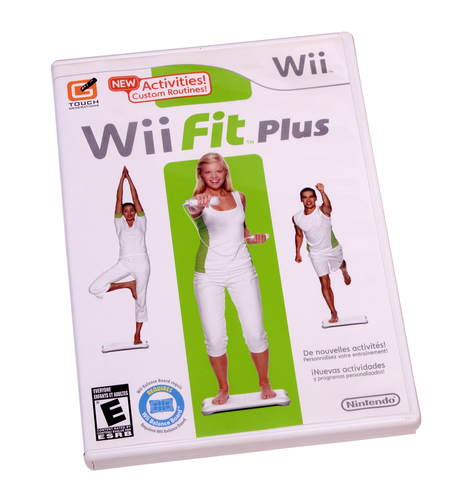MS Researchers Find Wii Balance Board Use Improves Balance

 New research published online ahead of print in the Radiological Society of North America (RSNA) journal Radiology on August 26, reports that a gaming accessory known as a balance board for the Nintendo Wii console may assist people with multiple sclerosis (MS) in reducing the risk of falling accidentally.
New research published online ahead of print in the Radiological Society of North America (RSNA) journal Radiology on August 26, reports that a gaming accessory known as a balance board for the Nintendo Wii console may assist people with multiple sclerosis (MS) in reducing the risk of falling accidentally.
Balance impairment has been found to be among the most reported, disabling MS symptoms. As a result, physical rehab programs are often used to help preserve balance. The Balance Board for the Wii is a flat, wireless accessory for the Wii that is roughly the dimensions of an average bathroom scale. The board interacts with the Wii Fit Plus video game, allowing players to stand and balance on the board. When they shift their weight and balance, it effectively controls characters and actions within the game. It also measures weight, BMI, and other health factors related to balance and dexterity and, in tandem with the Wii Fit Plus game, can give users a custom-tailored home exercise regimen that ranges from yoga and balance exercises to more rigorous aerobics.
Magnetic resonance imaging (MRI) scans showed that use of the Nintendo Wii Balance Board system appears to induce favorable changes in brain connections associated with balance and movement. However, while Wii balance board rehabilitation has been previously reported by MS patients to be effective, researchers had little insight into how the device could improve balance.
The Original Research paper, entitled “Multiple Sclerosis: Changes in Microarchitecture of White Matter Tracts after Training with a Video Game Balance Board” (Radiology, Posted online on.26 Aug 2014, Ahead of Print, 10.1148/radiol.14140168 DOI: https://dx.doi.org/10.1148/radiol.14140168), is coauthored by scientists Luca Prosperini, MD, PhD, Fulvia Fanelli, MD, Nikolaos Petsas, MD, PhD, Emilia Sbardella, MD, PhD, Francesca Tona, MD, Eytan Raz, MD, Deborah Fortuna, MS, Floriana De Angelis, MD, Carlo Pozzilli, MD, PhD, Patrizia Pantano, MD, of the MS Center, Department of Neurology and Psychiatry (L.P., F.F., D.F., F.D.A., C.P.), and Neuroradiology Section, Department of Neurology and Psychiatry (N.P., E.S., F.T., E.R., P.P.), S. Andrea Hospital, Sapienza University, Rome, Italy and IRCCS Neuromed, Pozzilli, Italy.
The purpose of the study was to determine if high-intensity, task-oriented, visual feedback training with a video game balance board (Nintendo Wii) induces significant changes in diffusion-tensor imaging (DTI) parameters of cerebellar connections and other supratentorial associative bundles and if these changes are related to clinical improvement in patients with MS.
The study protocol was approved by a local ethical committee; each participant provided written informed consent. During the 24-week, randomized, two-period crossover pilot study, 27 patients underwent static posturography and brain magnetic resonance (MR) imaging at study entry, after the first 12-week period, and at study termination. Thirteen patients started a 12-week training program followed by a 12-week period without any intervention, while 14 patients received the intervention in reverse order. Fifteen healthy subjects also underwent MR imaging once and underwent static posturography. Virtual dissection of white matter tracts was performed with streamline tractography; values of DTI parameters were then obtained for each dissected tract. Repeated measures analyses of variance were performed to evaluate whether DTI parameters significantly changed after intervention, with false discovery rate correction for multiple hypothesis testing.
[adrotate group=”4″]
The coauthors report that relevant differences between patients and healthy control subjects in postural sway and DTI parameters (P < .05) were observed. MS patients’ MRI scans revealed a substantial impact in positively affecting nerve tracts, which are known to be crucial in both balance and movement. The changes observed on MRI reports correlated with marked improvements in patient balance, as quantitively measured through an assessment known as posturography. These observed changes were able to be correlated with objective balance improvement measures, which were detected at static posturography (r = 0.381 to 0.401, P < .05). However, researchers also pointed out that both DTI and clinical changes were not sustained beyond a 12-week after the end of training.
As a result, the researchers were able to conclude that despite the low statistical power (35%) due to the small sample size, the results showed that training with the balance board system modified the microstructure of superior cerebellar peduncles. The clinical improvement observed after training might be mediated by enhanced myelination-related processes, suggesting that high-intensity, task-oriented exercises could induce favorable microstructural changes in the brains of patients with MS that can reduce the risk of accidental falls, thereby reducing the risk of fall-related comorbidities like trauma and fractures.
 These brain changes in MS patients are likely a manifestation of neural plasticity, or the ability of the brain to adapt and form new connections throughout life, according to study lead author Luca Prosperini, M.D., Ph.D. , from Sapienza University in Rome, Italy. “The most important finding in this study is that a task-oriented and repetitive training aimed at managing a specific symptom is highly effective and induces brain plasticity, says Dr. Prosperini in a RSNA release. “More specifically, the improvements promoted by the Wii balance board can reduce the risk of accidental falls in patients with MS, thereby reducing the risk of fall-related comorbidities like trauma and fractures.”
These brain changes in MS patients are likely a manifestation of neural plasticity, or the ability of the brain to adapt and form new connections throughout life, according to study lead author Luca Prosperini, M.D., Ph.D. , from Sapienza University in Rome, Italy. “The most important finding in this study is that a task-oriented and repetitive training aimed at managing a specific symptom is highly effective and induces brain plasticity, says Dr. Prosperini in a RSNA release. “More specifically, the improvements promoted by the Wii balance board can reduce the risk of accidental falls in patients with MS, thereby reducing the risk of fall-related comorbidities like trauma and fractures.”
Dr. Prosperini also notes, “that similar plasticity has been described in persons who play video games, but the exact mechanisms behind the phenomenon are still unknown. He hypothesizes that “changes can occur at the cellular level within the brain and may be related to myelination, the process of building the protective sheath around the nerves.”
“The rehabilitation-induced improvements did not persist after the patients discontinued the training protocol,” Dr. Prosperini says, “most likely because certain skills related to structural changes to the brain after an injury need to be maintained through training.”
“This finding should have an important impact on the rehabilitation process of patients, suggesting that they need ongoing exercises to maintain good performance in daily living activities,” Dr. Prosperini adds.
Radiology is edited by Herbert Y. Kressel, M.D., Harvard Medical School, Boston, Mass., and owned and published by the Radiological Society of North America, Inc. (https://radiology.rsna.org/) — an association of more than 53,000 radiologists, radiation oncologists, medical physicists and related scientists promoting excellence in patient care and health care delivery through education, research and technologic innovation based in Oak Brook, Ill. (For more information, visit: https://RSNA.org
Sources:
The Radiological Society of North America, Inc.
Radiology
Image Credits:
The Radiological Society of North America, Inc.






